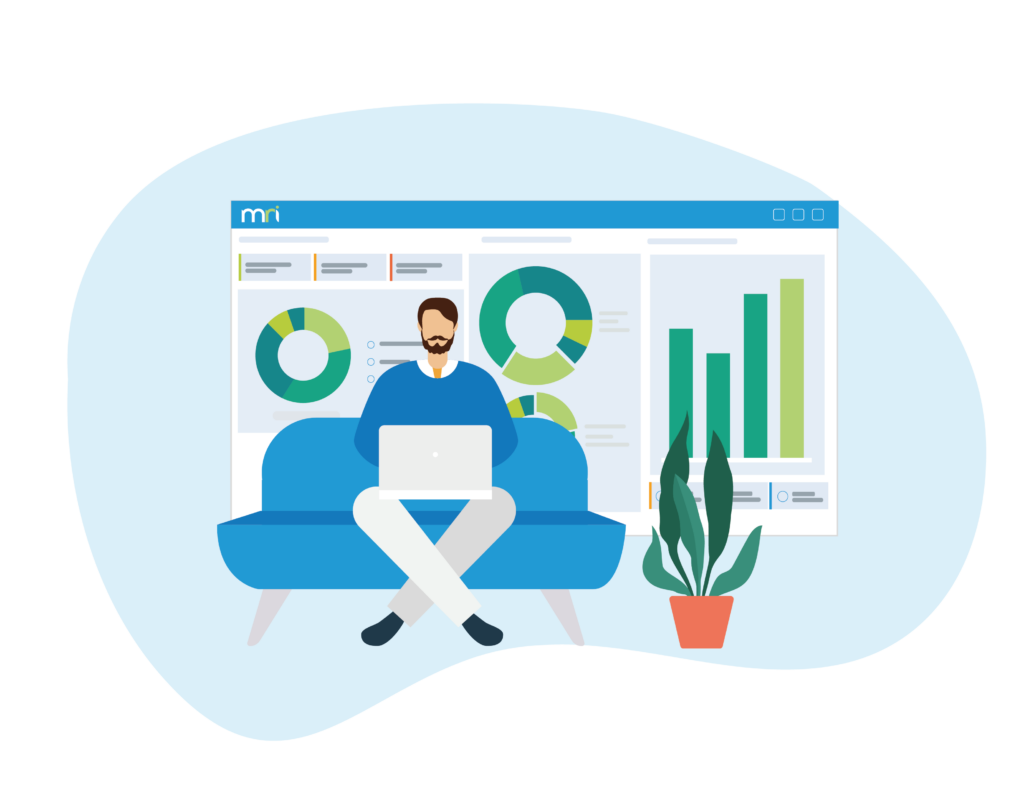10 important commercial real estate metrics
In an era where real estate firms are inundated with data, it can be hard to know which insights are the most important to your business.
However, it’s even harder to uncover that information in the first place.
After all, with such extensive analytics capabilities available to you, how do you decide what to track? Where do you even begin to look to pinpoint the information you need?
The top commercial real estate performance metrics
Rather than letting yourself get overwhelmed, asking these questions over and over again… you need a plan of attack.
By appointing some key commercial real estate metrics (and creating a plan to measure them), you’ll be able to take the first step towards using organisational data to your advantage.
1. Revenue growth
Are you actually growing your business, or is all the work you do for nothing? This is a big consideration many real estate leaders spent lots of time puzzling over, especially when they feel like they are hitting a wall. Knowing the answer will give you a clear picture of your position in the market, the opportunities you can take advantage of, and whether or not you need to fund more investment into marketing.
2. Occupancy rate
A high-level view of your occupancy rates gives you not only a better understanding of your tenants but also a more thorough picture of how your space is being used. These occupancy metrics can equip your business with a new understanding of the relationship between your leases and your physical space, instilling more confidence in your strategic planning.
3. Tenant turnover
There’s something we can all agree on… it’s much cheaper to retain the tenants you already have than it is to constantly be searching for new leads. Therefore, tenant turnover is a commercial real estate performance metric you can’t ignore. Understanding when tenants are leaving is going to guide your future decision-making and encourage proactivity when it comes to providing the best customer experience possible.
4. Lease renewals rate
Admit it. It’s every landlord’s dream to hear their renter say, “Yes, I’d love to renew my tenancy.” So, why not boost investor confidence a little by tracking your renewal rate? Alternatively, if it’s not as high as you’d like, at least you’ll be able to identify the problem and start actioning change. This is only possible if you have the data to hand.
5. Leasing conversions
While this might seem like a niche real estate metric to track, it’s an important one. If there’s a high demand for your buildings and find that tenants are regularly overstaying their contract, then this is something you need to look into. Even a delay of a few days can be detrimental to your reputation – especially when you have businesses with staff members that need office space as soon as possible.
6. Expense ratio
As a business with lots of assets, it could be critical to your success to measure your operating expenses compared to the value of the belongings you hold. While this might not seem immediately useful to your business on a day-to-day basis, it’s often a key consideration for investors who are looking to spend money. To catch their attention and demonstrate your organisation’s strength, don’t forget this valuable real estate performance metric.
7. Eviction rate
None of us likes to encounter bad tenants who commit fraud or make late payments. However, every so often, mistakes get made. We have to accept that as a risk when we’re qualifying leads and set aside money for emergencies should something happen. To get a good understanding of whether or not your team is onboarding quality tenants, you should be actively measuring your eviction rate.
8. Maintenance costs
Your organization’s budgets are designed to meet the strategic goals of the business, and by not tracking those budgets, you run the risk of missing your marks. Is that something you want to happen? If not, you should continuously be tracking this important commercial real estate metric. Soon, you’ll be able to manage your spending much better.
9. Net operating income
This real estate metric is influenced by many underlying factors, like total capital and operating expenditures. You need to drill into these stats so you can better understand the ways in which they impact your business and, from there, you’ll be able to identify how best to prioritize your organisation’s time.
10. Receivables tracking
All businesses have certain expectations when it comes to on-time rent from their tenants. With the power to keep track of your receivables, you’ll be easily able to identify late payments and assess the impact on cash flow based on that information. This way, you’ll be cleverly positioned to run a profitable and successful company.

How to track commercial real estate metrics
Do you have a Data Analyst on your team?
If not, then you’ll likely struggle to turn your real estate data into actionable insights. It’s a challenging task that requires an eye for detail and a lot of patience.
Instead of getting frustrated and being forced to make assumptions, all firms should consider enlisting the support of technological tools.
Truly, these systems can do the majority of the work for you.
Over the years, AI has been designed that can collect and trawl vast data sets, identify patterns, and make suggestions. This is an asset that can’t be ignored in a competitive environment.
Commercial real estate metrics – FAQs
No matter which metrics in real estate you decide to track, be sure to use data to inform your decision-making and increase efficiency across your organisation.
Still have questions? Maybe these FAQs can provide the guidance you need.
Commercial Real Estate Software
Increase efficiency, reduce costs, and maximise portfolio performance.
Get a Demo
Track real estate performance metrics with MRI Software
In the coming years, it’s vital that CFOs use commercial real estate tracking to ensure the success of their business.
However, it’s not going to be easy. Gathering all the necessary data that exists across an organisation is a challenging feat that takes a lot of work.
Thankfully, there’s an answer.
With MRI Software’s business intelligence and analytics solution, commercial real estate firms can visualize their current metrics, monitor KPIs and drill down to the granular details to make strategic data-driven decisions and deliver for their investors.
Learn how MRI arms your business with the ability to assess trends and identify outliers and prepares you to become a data visionary, or explore alternative commercial property management trends today.
Retail Property Leaders: Leveraging benchmarking data for strategic decision-making
Watch our webinar as our retail expert, Tom Price, delved into the intricate world of retail benchmarking data which is essential knowledge every retailer needs to be armed with to stay ahead in today’s competitive landscape. He explored the ecosyste…

